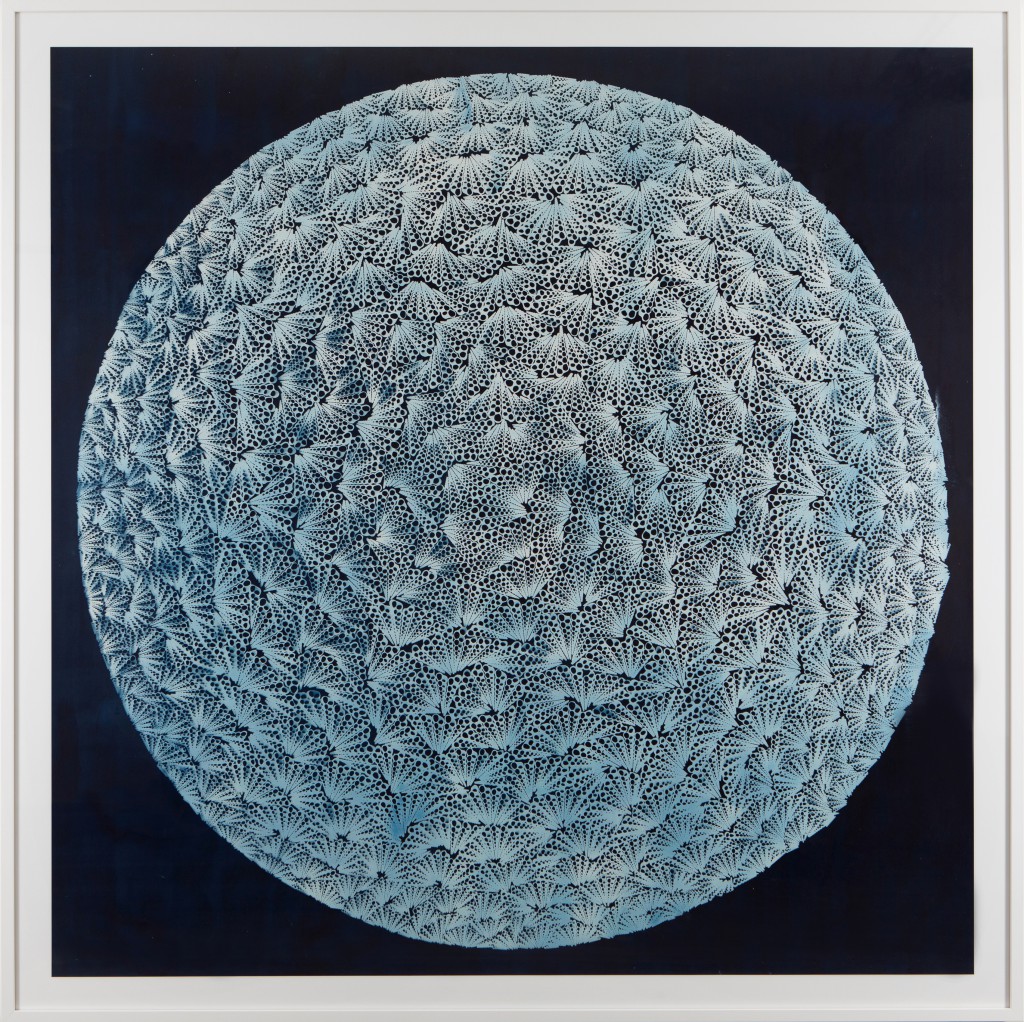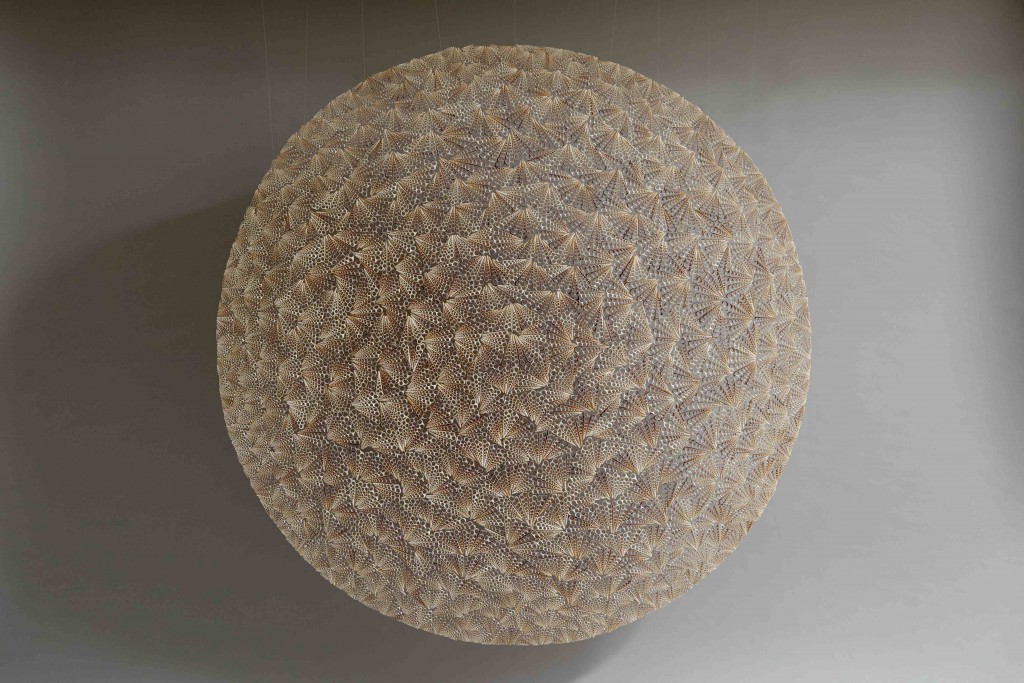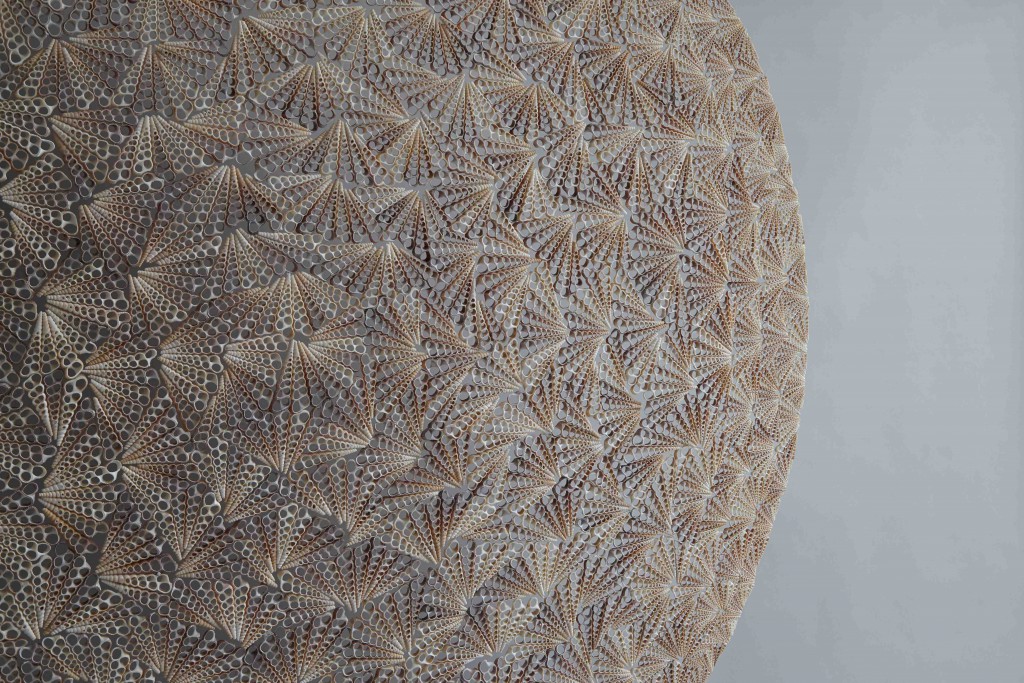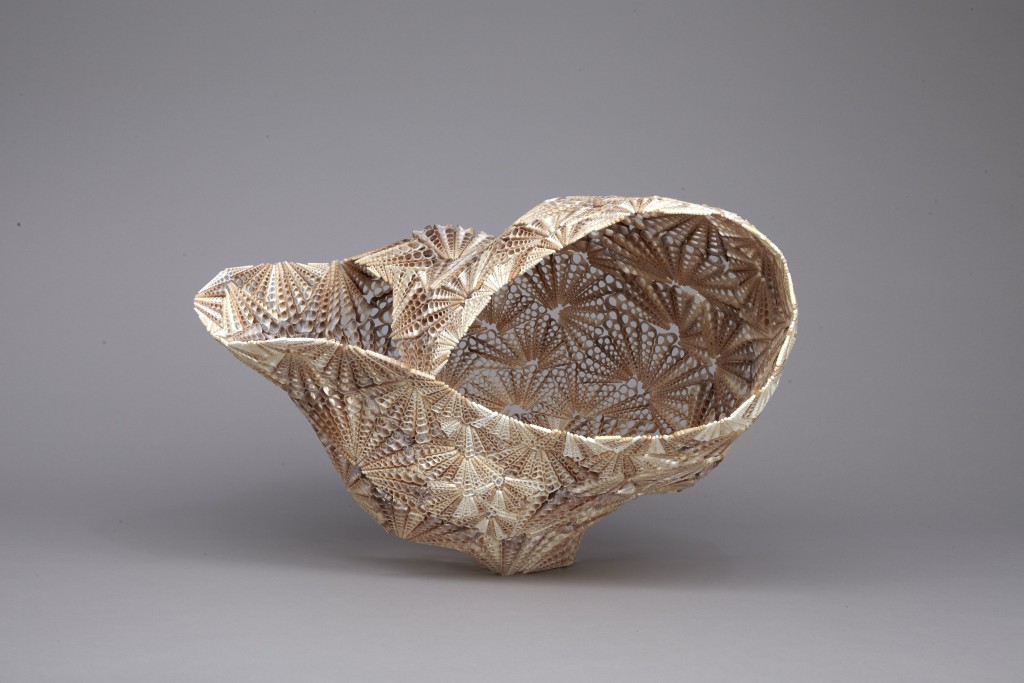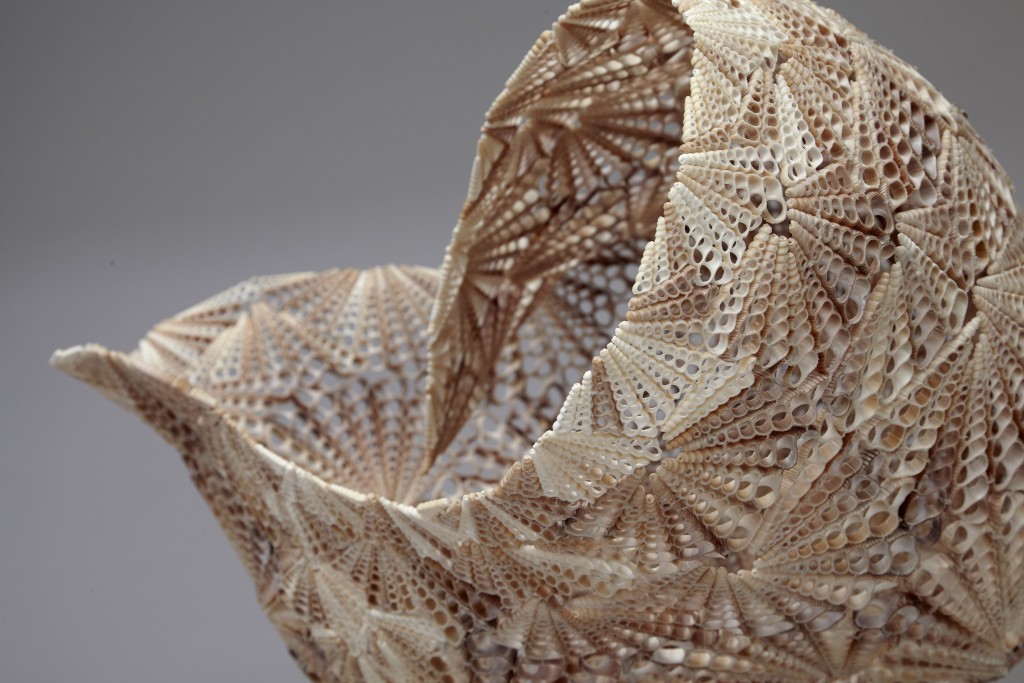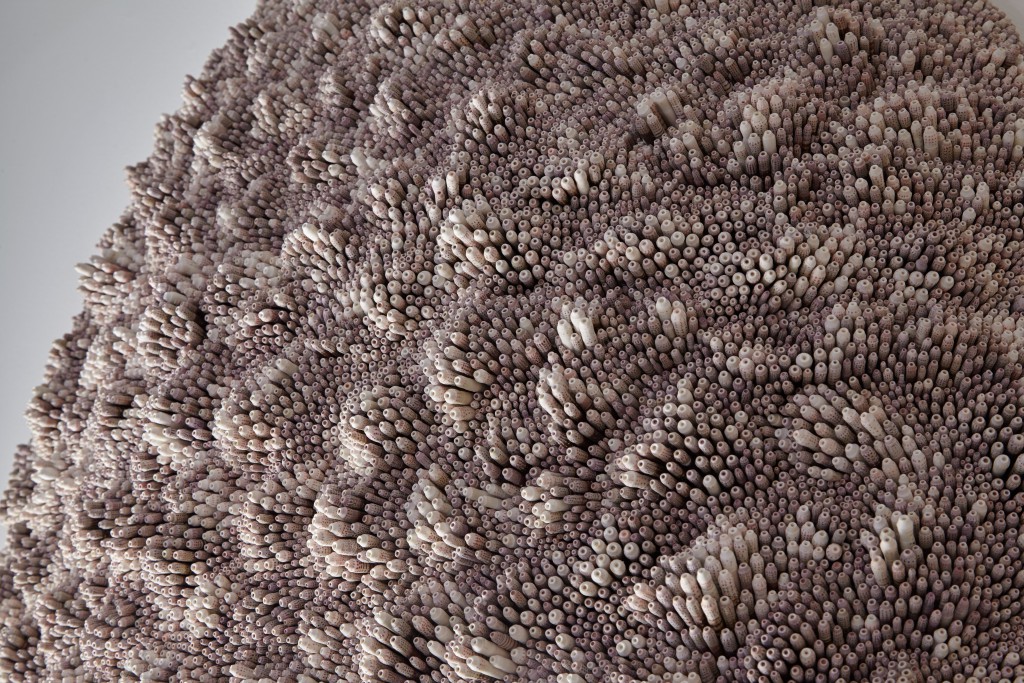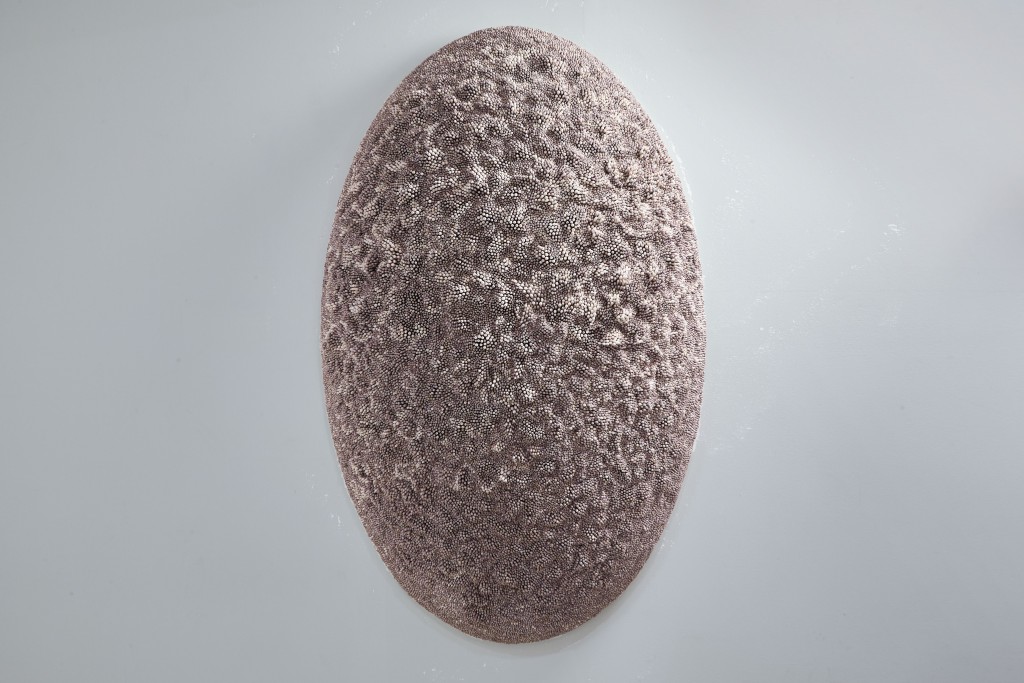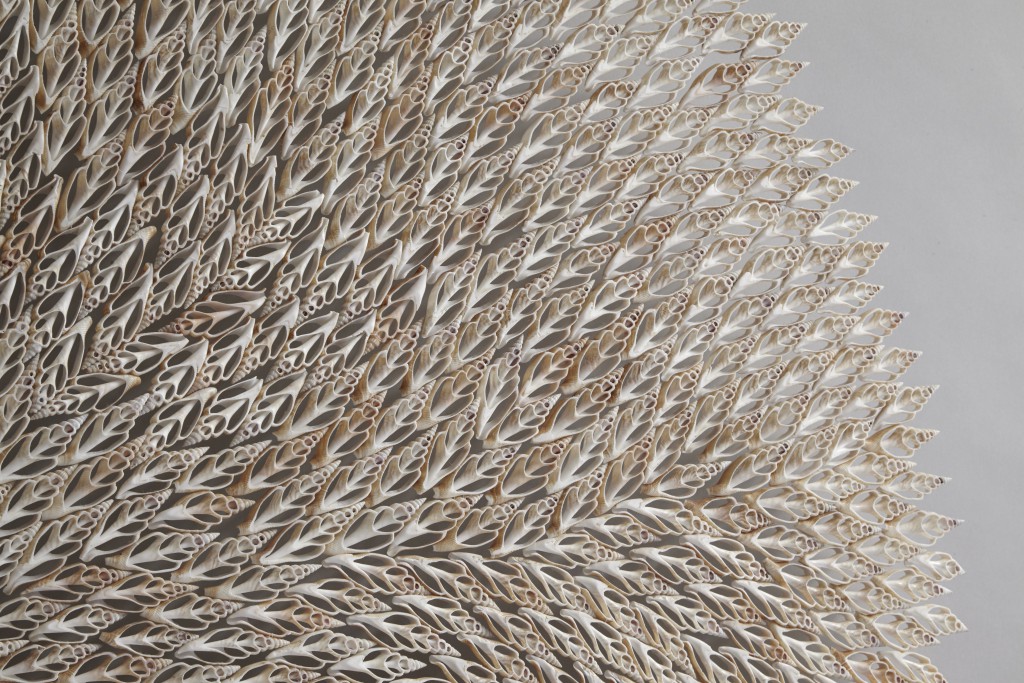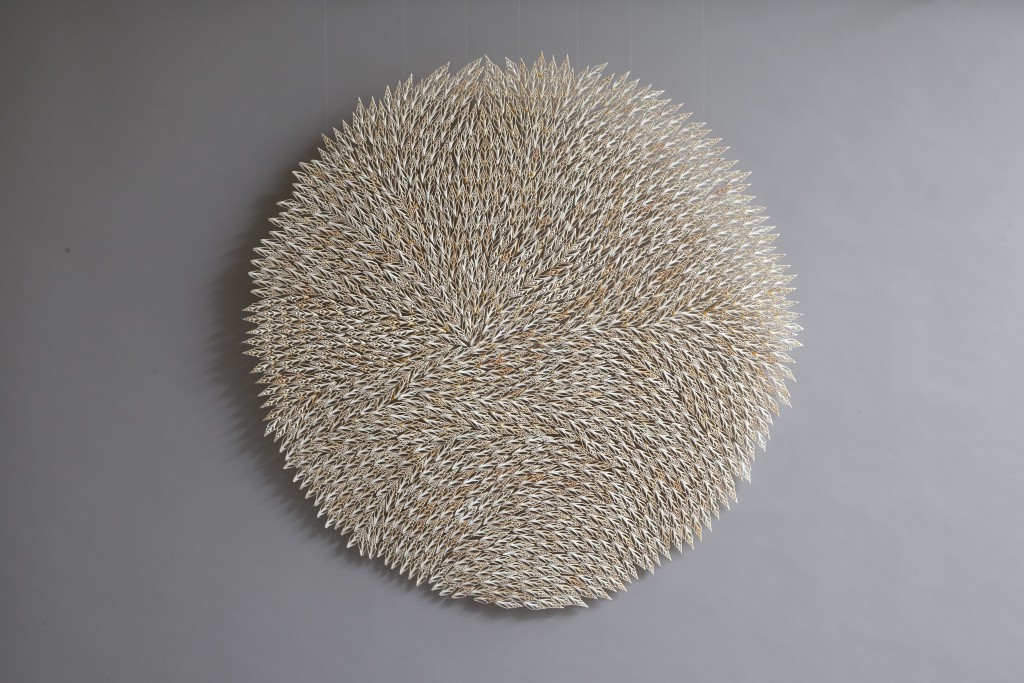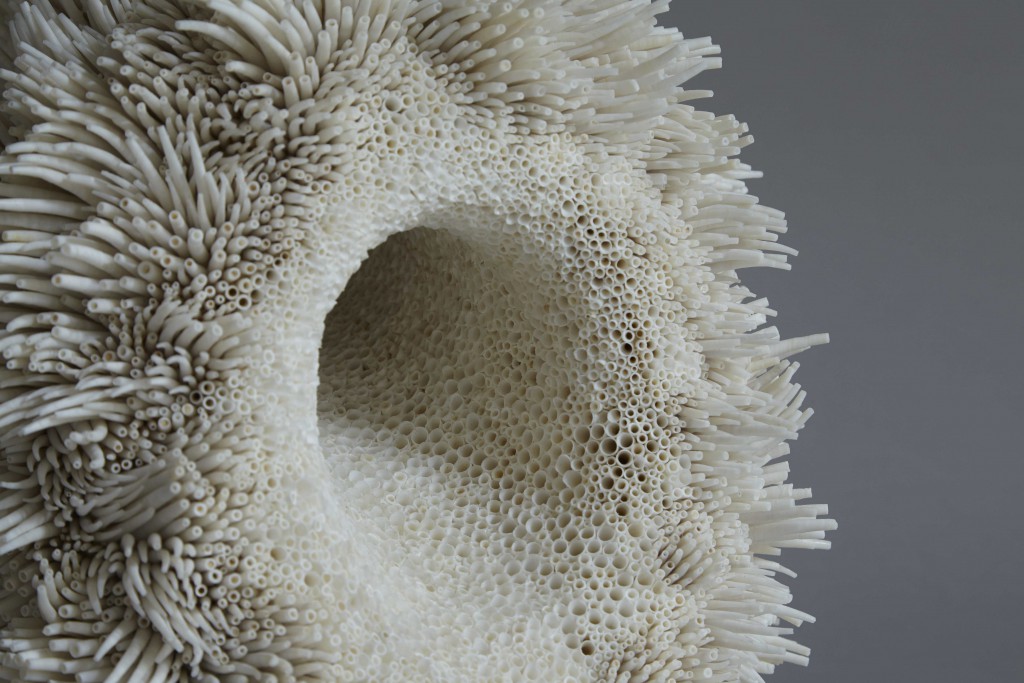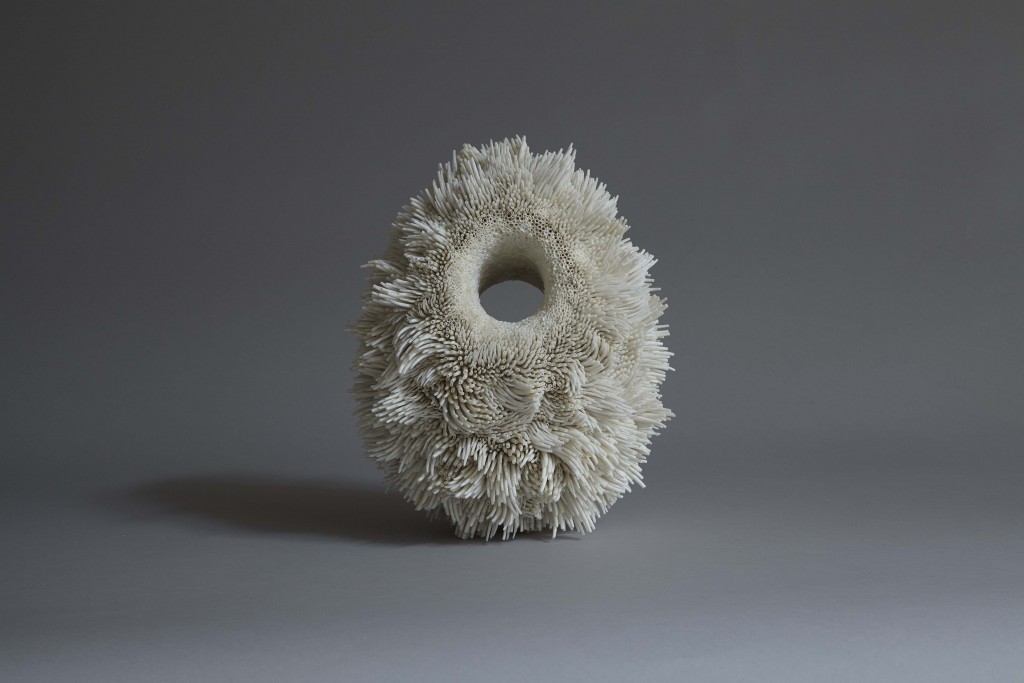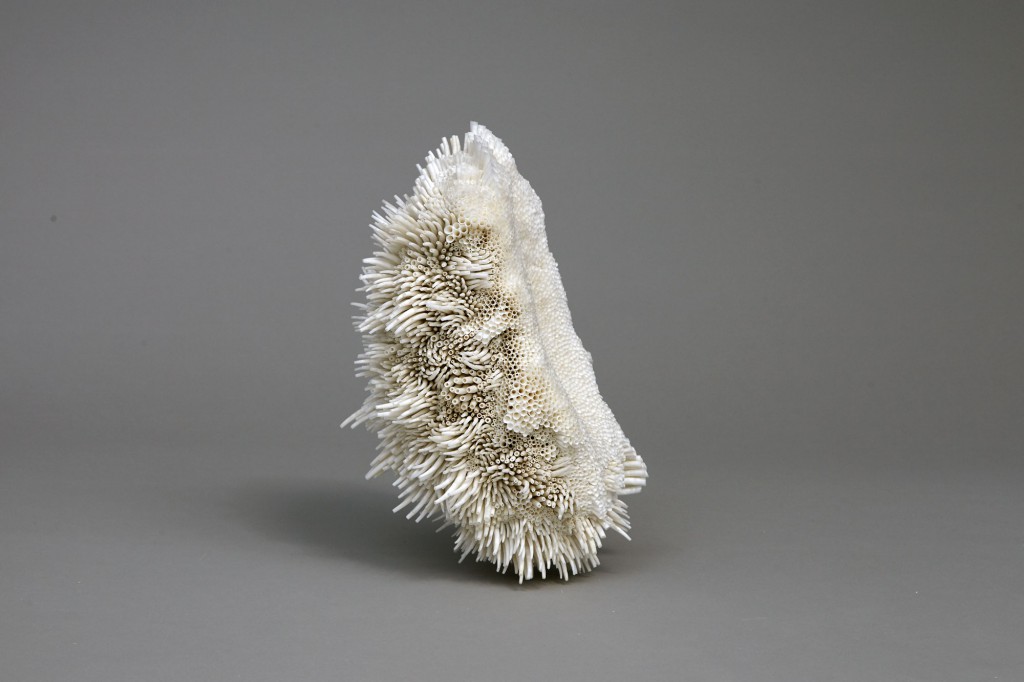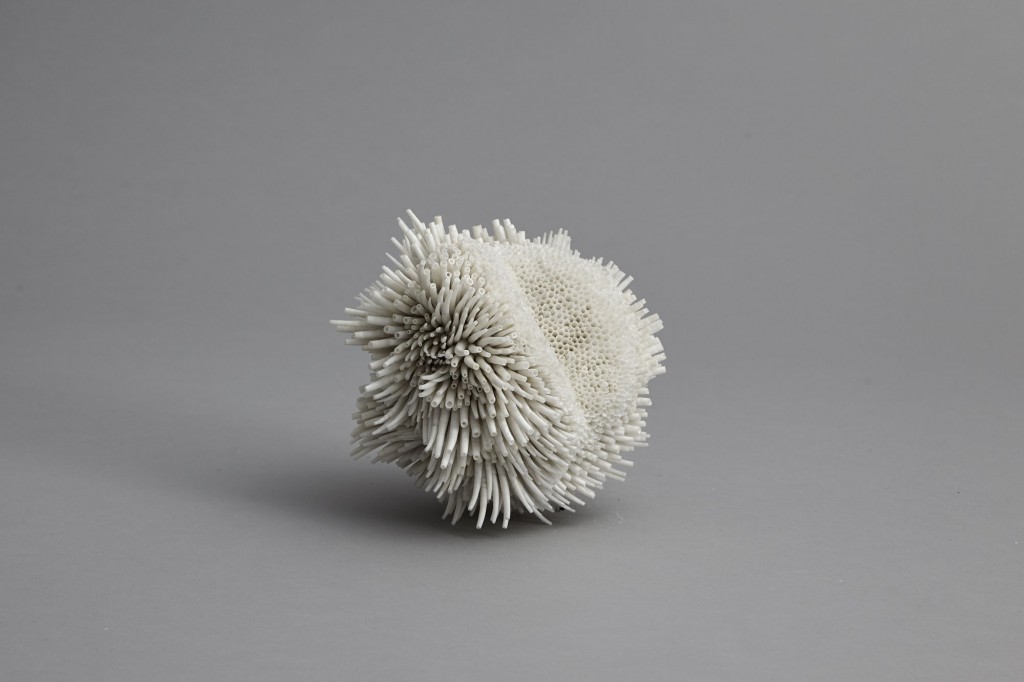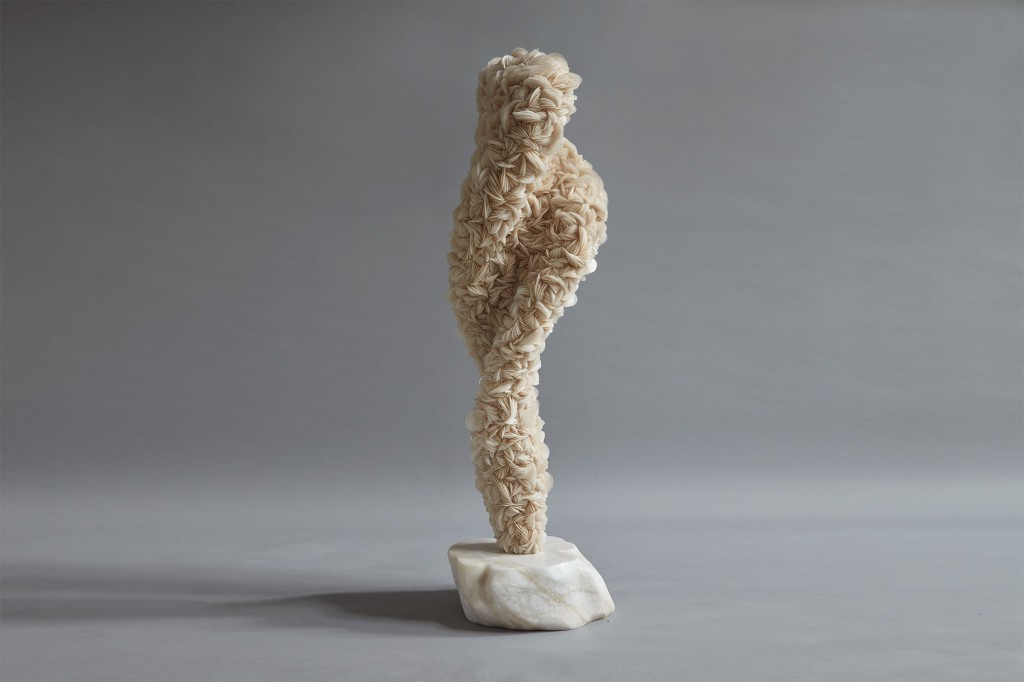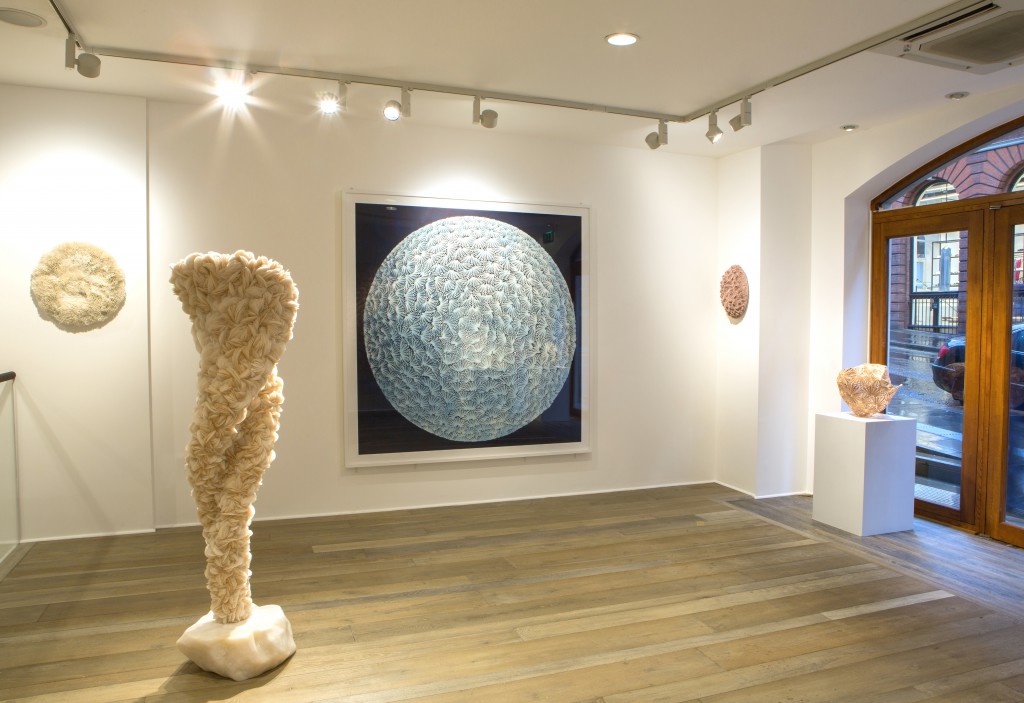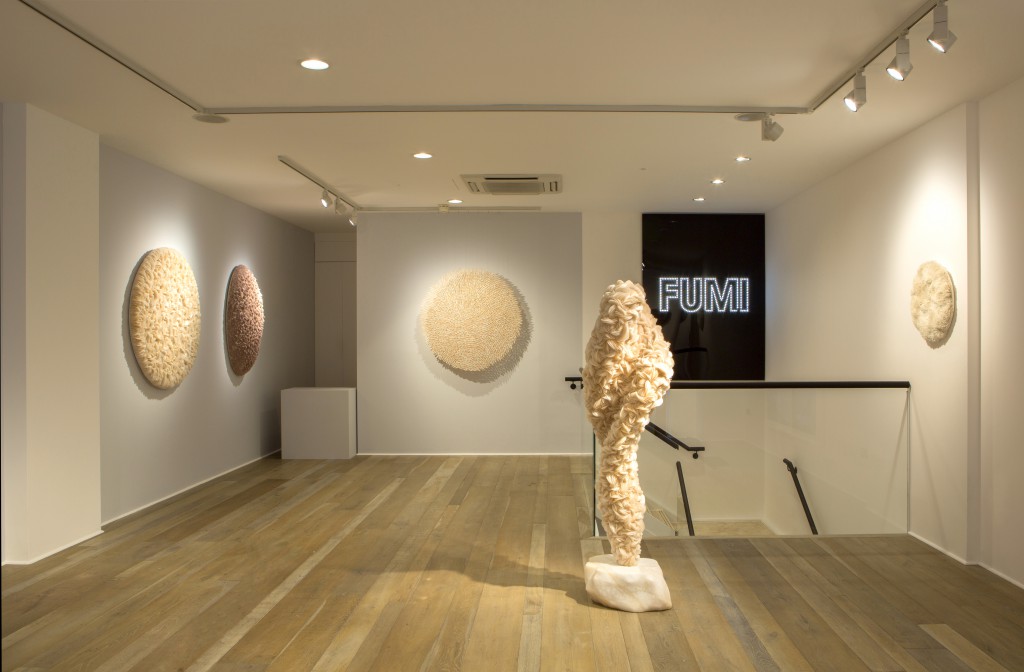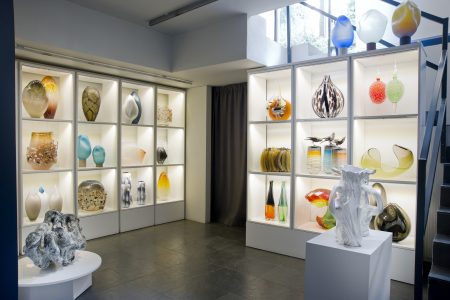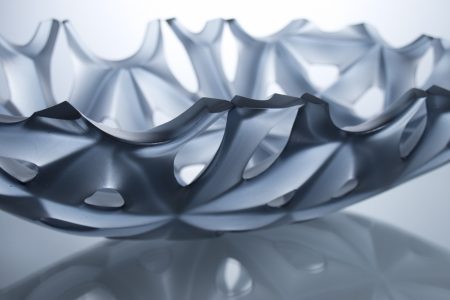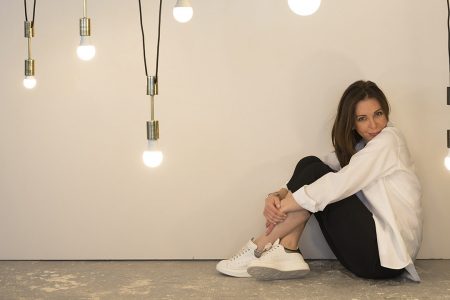Rowan Mersh at Gallery FUMI
A British sculptor who has distinguished himself with marvel-worthy seashell sculptures, Rowan Mersh tells TLmagazine about his exhibition at Gallery FUMI.
“Praeteritum, Praesens et Futurum – Latin for past, present and future is a moment of reflection on my practice to move towards the future,” says British sculptor Rowan Mersh about his new exhibition showing at Gallery FUMI in London until June 30. Representing five years of work, the exhibition predominately features Mersh’s seashell work that evolved from the generative approach to materials he developed while studying textiles at the Royal College of Art. After graduating in 2005, Mersh’s textile sculptures and kinetic installations began evolving into to large-scale wall pieces and freestanding sculptures made of myriad modular materials.
“I feel it is important to reflect upon my previous works in order to move beyond the logical order of progression creatively. This collection of new works represents critical sculptural moments from both my past and present while anticipating unexplored territories,” Mersh went on. TLmagazine spoke to him about his particular fascination with seashells.
When and how did you come to work with seashells?
I began working with seashells in 2012 after stumbling across them while sourcing multiples of materials that can be found sustainably in nature. The inherent characteristics of seashells is what primarily drew me to them; each shell is unique in colour, size and shape – often incredibly subtly – which I find extraordinarily beautiful. Also, I was and still am very interested in the historical and cultural roles seashells have played in societies all over the world.
Previously your work has explored the generative potential of numerous materials, from leather and twirled paper to kebab sticks and stockings. What is it about seashells that has kept you fascinated for almost five years?
I feel that I am still learning from seashells, both with regards to their cultural history and hidden secrets, and with regards to their creative and sculptural potential. No other material I have worked with yet, has made me feel this way.
What is your making practice like? Do you find the painstakingly meticulous work meditative?
My work is both an expression of the inherent beauty of the material I am working with and an expression of part of myself – I try to listen to materials and respond to each shell, which is laid as an individual. The shape, colour and size of each shell informs the shape, colour and size of neighbouring shells, allowing works to evolve, almost grow in fact, naturally. It is an incredibly labour-intensive process and can be meditative at times. Ultimately I love making these works so the days, weeks and months taken in production never feel relative in creation, only after the work is complete.
What reflections have you had on your own work while putting together this retrospective of the past five years?
My overriding feeling throughout this process has been one of gratitude, to all the people and loved ones who have played a part in making this possible.
